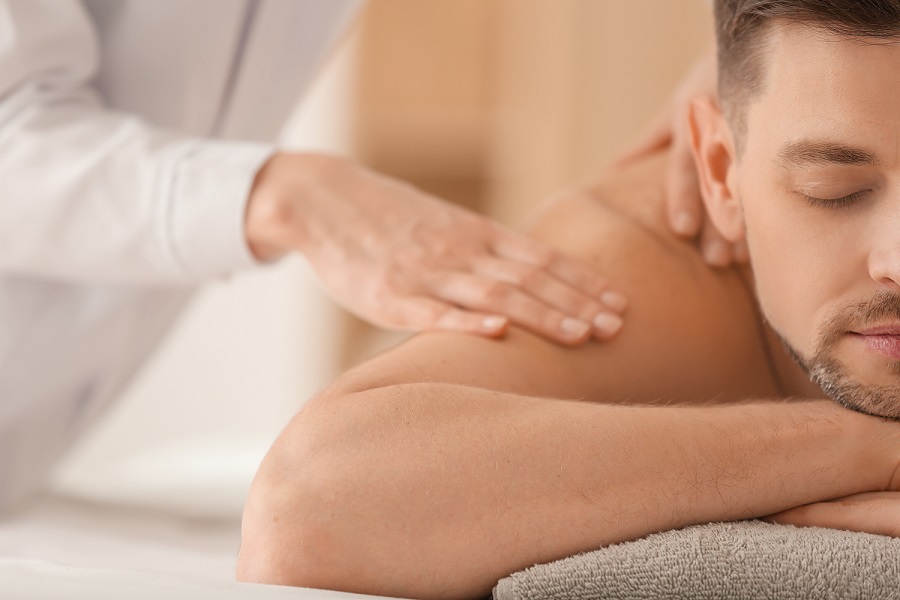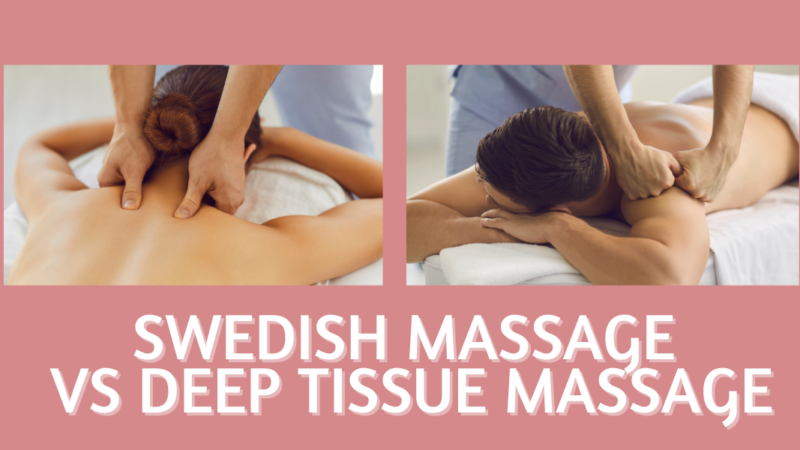

Swedish Massage vs Deep Tissue Massage has always been a hot topic in the world of therapy. Before meeting with your therapist, it is a must to find out the difference between the two. Swedish Massage and Deep Tissue massage differs when it comes to the amount of pressure, area of focus, strokes, benefits and possible side effects after the treatment.
One of the main differences between these two types of massage is the amount of pressure exerted during the therapy. While Swedish Massage uses lighter and gentler strokes, Deep Tissue Massage is firmer with the strokes involved.
Swedish Massage primarily targets the superficial layers of the muscles, while Deep Tissue Massage focuses on the deepest layers of muscle tissue, tendons, and fascia.
If you are experiencing tensions in your neck, shoulders, and back we suggest a Swedish Massage for you. But if you feel some stiffness in your major muscle groups and joints plus tendon injuries, you might want to consider a Deep Tissue Massage.
Those that will benefit from a Swedish Massage are individuals who have mild neck, shoulder, and back pains. These are usually caused by sitting all day at the office and other light physical activities. If it is your first time to have a massage, Swedish is also your best option.
If you are stressed or want to let go of the anxiety, this massage can help you. A relaxation massage is one of the best ways to counter stress reactions such as shortness of breath, accelerated heart rate, excessive sweating, and chest pain.
Deep Tissue Massage is best suited for athletes, runners, and people with injuries. The amount of pressure during the therapy can help these individuals with rigorous physical activities recover fast. Furthermore, you can also choose to have this if you are suffering from chronic neck, shoulder, and lower back pain.
There are different strokes involved in doing a massage. But for the case of Swedish Massage and Deep Tissue Massage, similar strokes may be applied. They are sometimes used in combination for a reason. Just like the earlier point, what separates one from the other is the amount of force or pressure applied.
What usually differs both is the technique used in Deep Tissue Massage. Most of the therapists use their fingers, fists, and maybe even elbows to reach and stretch that deep tissue.
A tip especially for Deep Tissue Massage, if the process is painful, that means something is wrong. The process must start with applying a stroke that will warm up the muscles. After identifying the tight areas, bumps, and knots, it’s time to have a firm and steady pressure to release the tension.
The benefits of massage therapy are quite endless. From physical, mental to emotional, a relaxed muscle can go a long way.
While both massages can release tension and improve blood circulation, they still do have unique effects. Swedish Massage, for example, you can choose this if you want to relax your entire body. It gives your body the boost you need for office and school activities. It can also reduce stress and the possibility of headaches. If you have a problem with your sleep, then having this massage is a wise idea.
Deep Tissue Massage boasts its benefits for individuals who experience lots of physical activities. It is the best massage to treat sports injuries like tennis elbow. This massage is also known to avoid high blood pressure. A proven study conducted by Massage Magazine even concluded a high correlation between deep-tissue massage and a reduction in blood pressure and heart rate.
Swedish massage, depending on the pressure applied, may result in small bruises and mild soreness in some part of your body. While Deep Tissue Massage, knowing the firm and steady pressure, may result in a sore body (or body part) and rhabdomyolysis, which is possible destruction of muscle tissue.
Your therapists must know what they are doing. The amount of pressure applied must be adjusted to avoid possible injuries. Please take note that you have the right as a customer to tell your therapist for a more gentler or firmer stroke.
| Category | Swedish Massage | Deep Tissue Massage |
| Pressure | Lighter, gentler Strokes but can be adjusted according to the customer’s needs | Similar strokes with Swedish Massage but with deeper strokes |
| Area of Focus | Superficial layers of the muscles | Deepest layers of muscle tissue, tendons, and fascia (sheets of dense connective fibrous tissue) |
| Best Suited For | People that are new to massage Suffering from mild neck, shoulder and back pains from office work and other light physical activities | Athletes, Runners, and people with injuries Suffering from chronic, neck, shoulder and lower back pain |
| Strokes Used |
*applied to both massage styles, differs only in the amount of pressure | |
| Benefits |
|
|
| Possible Side Effects | Mild soreness | More soreness compared to Swedish because of the pressure applied Can cause rhabdomyolysis (destruction or degeneration of muscle tissue) |
Share On: